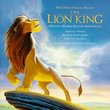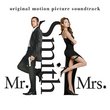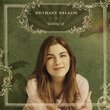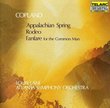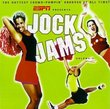| All Artists: Paul Cantelon Title: The Other Boleyn Girl [Original Motion Picture Soundtrack] Members Wishing: 0 Total Copies: 0 Label: Varese Sarabande Original Release Date: 1/1/2008 Re-Release Date: 2/26/2008 Album Type: Soundtrack Genres: Pop, Soundtracks Style: Easy Listening Number of Discs: 1 SwapaCD Credits: 1 UPCs: 030206688429, 4005939688417, 4005939688424, 4005939688431 |
Search - Paul Cantelon :: The Other Boleyn Girl [Original Motion Picture Soundtrack]
![The Other Boleyn Girl [Original Motion Picture Soundtrack]](https://nationalbookswap.com/cd//l/11/7111/1317111.jpg) | Paul Cantelon The Other Boleyn Girl [Original Motion Picture Soundtrack] Genres: Pop, Soundtracks
|
Larger Image |
CD DetailsSimilarly Requested CDs
|
CD ReviewsBeautiful period music Jon Broxton | Thousand Oaks, CA | 07/22/2009 (5 out of 5 stars) "The life of Anne Boleyn has fascinated British historical scholars for centuries. As the second wife of King Henry VIII, she was made Queen of England in 1533, and gave birth to a daughter who would later go on to be Queen Elizabeth I, but was the accused of adultery, incest, and high treason, and subsequently beheaded in 1536. Not only that, she was indirectly responsible for the creation of the Church of England. Director Justin Chadwick's sumptuous film, The Other Boleyn Girl, is based on the novel by Philippa Gregory, and explores the life of Anne and her sister, Mary, and the political and sexual machinations that led to them becoming rivals in the court of Henry VIII. The film stars Natalie Portman as Anne, Scarlett Johansson as Mary, Eric Bana as Henry, and David Morrissey, Mark Rylance, Kristin Scott-Thomas and Benedict Cumberbatch in supporting roles. For the music, Chadwick turned initially turned to Edward Shearmur, but for whatever reason his work was eventually removed, and he was replace by up-and-coming California-born composer Paul Cantelon. Cantelon is a new name in the film music world; he was a violin prodigy who made his performance debut at the age of 13, and later studied at the Geneva Conservatory of Music, the Juilliard School of Music in New York City, the Conservatoire de Paris. Prior to his film music debut, Cantelon released a number of solo classical piano recordings, founded the alternative band Wild Colonials, and performed with a diverse range of artists from Yo-Yo Ma to Joe Cocker and the Red Hot Chili Peppers. He made his mainstream film music debut in 2005 with the film "Everything is Illuminated", and received praise for his score for the critically acclaimed 2007 drama "The Diving Bell and the Butterfly", but The Other Boleyn Girl is by far the most impressive work of his yet brief career. As one might expect for this kind of romantic costume drama, Cantelon's score is classical in tone and style, making use of a traditional chamber-sized ensemble, and concentrating solely on good, old fashioned orchestral writing. He does try to inject of a little bit of Renaissance flavor into the score by occasionally introducing harps, lutes, a tinkling cimbalom, and other such instruments from the Tudor era, but on the whole Cantelon's music is entrenched in a modern, western classical style, which is pleasing indeed. The themes are lush and florid, are dramatic without being melodramatic, and have an innate `Englishness' to them, which is difficult to describe, but immediately apparent upon listening to the music. There is a hint of both Ralph Vaughan Williams' pastoral style and Georges Delerue's elegant romance in the lovely "Opening Titles", which features a beautifully tender oboe theme which eventually gives way to a swooning piano melody. "Mary and Henry" is gorgeous piece for strings, soft woodwinds and shimmering harps that speaks of refined romance; "Anne Returns" allows a solo guitar and solo piano to play off each other with great dexterity; and "Anne Charms Henry", quite cleverly, features some faint exotic textures, and a dexterous oboe performance that has the beckoning guile of an Indian snake charmer. The lamenting tone of "Mary Leaves Court" is bittersweet; attractive, but pitifully sad at the same time. But this is not to say that The Other Boleyn Girl is all about ornate romance; cues such as "Going to Court" are more energetic and forceful, with an increased percussion presence, and "Anne's Coronation" is an exultant choral piece of which Handel would be proud, while elsewhere "Anne's Secret Marriage", "Anne is Exiled" and "Mary Lies for Anne" provide the first touches of the shades of darkness that eventually come to characterize the latter parts of the score. "Queen Katherine's Trial" is a stunningly realized piece filled with a sense of dignified resignation and intense sorrow; this continues on into the equally striking "Banished". "Anne Conspires" is a threatening piece underpinned by the unsettling rumble of tremolo strings, while the finale of the score - "Anne and George", "Guilty", "The Execution" and "Finale" - is a quartet of intensely beautiful, but overwhelmingly sad string-based cues that layer thickly the feelings of velvet-clad heartbreak. It's not subtle, but it packs an undeniable emotional punch. This is all wonderful work by Cantelon, and one which is deserving of high praise, but I can see how this might not appeal to the masses. I have often read comments by people who find this kind of scoring to be boring, probably due to it's lack of action music and blaring brasses. I personally find the restraint, elegance and classicism of Cantelon's work to be musically refreshing, and intellectually stimulating. It helps, of course, that the thematic writing is strong, and that the orchestrations are clear and precise. This is a score which will appeal to admirers of composers like Georges Delerue, John Barry, Patrick Doyle and George Fenton; as such, I loved it, and I will be watching Paul Cantelon's career path with interest." Copies the Carter Burwell temp track Scott Andrew Hutchins | Bronx, NY, USA | 05/05/2009 (3 out of 5 stars) "The score plays well in the film, but I felt that it was obviously temp-tracked with Carter Burwell's scores from _Gods and Monsters_, _Hamlet_, and possibly even _Being John Malkovich. The main waltz theme from _Gods and Monsters_ is particularly influential on this score, whcih as it was [pointed out, does not use any instruments from the period. If the score were especially good, that wouldn't mater, and if the score were especially good, the use of period instruments might get it higher praise than it deserves. I would like to hear more from Paul Cantelon and see if he develops a personal style that is as recognizable as Burwell's." Quite good, mellow, romantic soundtrack Virginia music lover | northern Virginia United States | 02/01/2009 (5 out of 5 stars) "I own several hundred soundtrack albums -- all the usual suspects -- Zimmer, Elfman, Horner, etc. I was unfamiliar with Mr. Cantelon's work but on the strength of this one soundtrack I will be watching for future work.
If this were a wine I would rate it in the mid eighties. It gets stronger the further one is into the album. There are several melodies in the second half that I would call haunting. It is entirely a lyrical orchestral album; you won't hear bombast, gun attacks, and I for one am glad the composer has spared us the weedly deedly "authentic" sounds of music and primitive instruments from the historical period. There is a reason such music is hardly played, and why modern instruments have triumphed. So, this is a good album for drinking some good red wine, relaxing, contemplating, maybe with a romantic companion. It is not on my top 20 list, but nonetheless is worth a listen. My romantic companion, my wife, interestingly gives it about the same "wine rating" score -- 85 or 86." |

 Track Listings (27) - Disc #1
Track Listings (27) - Disc #1
